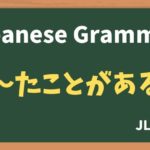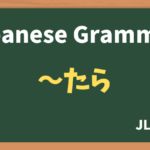
Contents
1. What is the た-Form?
The た-form is similar to the て-form, but it’s used to express actions that happened in the past. It’s an important verb form in Japanese, as it can stand alone to describe past events or be combined with other words to express more complex ideas.
2. How to Form the た-Form for Each Verb Group
We’ll cover two methods for forming the た-form: starting from the dictionary form and starting from the ます form.
Method 1: Forming the た-Form from the Dictionary Form (e.g., のむ)
For learners familiar with the dictionary form, here’s how to create the た-form for each verb group:
Group 1 (U-Verbs):
-
- Verbs ending in う, つ, or る: Change to った (e.g., あう → あった; まつ → まった; とる → とった).
- Verbs ending in む, ぶ, or ぬ: Change to んだ (e.g., よむ → よんだ; あそぶ → あそんだ; しぬ → しんだ).
- Verbs ending in く: Change to いた, with an exception for いく, which becomes いった (e.g., かく → かいた; いく → いった).
- Verbs ending in ぐ: Change to いだ (e.g., およぐ → およいだ).
- Verbs ending in す: Change to した (e.g., はなす → はなした).
- Group 2 (RU-Verbs):
- Simply replace る with た (e.g., たべる → たべた; みる → みた).
- Group 3 (Irregular Verbs):
- する becomes した.
- くる becomes きた.
Method 2: Forming the た-Form from the ます Form (e.g., 飲みます)
For students who learned the ます form first, here’s how to create the た-form by identifying the sound just before ます:
For learners who learned the ます form first:
- Group 1 (U-Verbs):
- Verbs with 〜い, 〜ち, or 〜り ending before ます → った (e.g., あいます → あった; まちます → まった; とります → とった).
- Verbs with 〜み, 〜び, or 〜に before ます → んだ (e.g., よみます → よんだ; あそびます → あそんだ; しにます → しんだ).
- Verbs with 〜き before ます → いた, with an exception for いきます which becomes いった (e.g., かきます → かいた; いきます → いった).
- Verbs with 〜ぎ before ます → いだ (e.g., およぎます → およいだ).
- Verbs with 〜し before ます → した (e.g., はなします → はなした).
- Group 2 (RU-Verbs):
- Simply change ます to た (e.g., たべます → たべた; みます → みた).
- Group 3 (Irregular Verbs):
- します becomes した.
- きます becomes きた.
3. Sample Sentences
To help you understand the た-form in context, here are some sample sentences for each verb group.
- Group 1 (U-Verbs)
- あう (to meet) → あった: きのう、ともだちにあった。
(I met a friend yesterday.) - よむ (to read) → よんだ: きのう、ほんをよんだ。
(I read a book yesterday.) - かく (to write) → かいた: さくぶんをかいた。
(I wrote an essay.)
- あう (to meet) → あった: きのう、ともだちにあった。
- Group 2 (RU-Verbs)
- たべる (to eat) → たべた: あさごはんを たべた。
(I ate breakfast.) - みる (to see) → みた: おもしろい えいがを みた。
(I watched an interesting movie.)
- たべる (to eat) → たべた: あさごはんを たべた。
- Group 3 (Irregular Verbs)
- する (to do) → した: しゅくだいをした。
(I did my homework.) - くる (to come) → きた: ともだちがきた。
(My friend came over.)
- する (to do) → した: しゅくだいをした。
These examples show the た-form used to talk about past events, a common use of this form.
4. Common Uses of the た-Form
The た-form has several important uses in Japanese. Here are some of the most common:
- Expressing Past Actions or Events:
The た-form is primarily used to describe completed actions or events in the past.- Example: せんせいに あった。 (I met the teacher.)
- Describing Experiences (using ことがある with the た-form):
When combined with ことがある, the た-form expresses having had a certain experience.- Example: にほんに いったことがある。 (I have been to Japan.)
- Giving Instructions or Commands (with 〜てください):
Sometimes, the た-form is used in polite commands or suggestions, especially in written instructions.- Example: この本を よんだら、レポートを かいてください。 (After reading this book, please write a report.)
- Expressing Wishes or Regrets:
In specific structures, the た-form can express hypothetical wishes or regrets about the past.- Example: もっと勉強したらよかった。 (I wish I had studied more.)
Each of these uses shows the versatility of the た-form, making it essential for expressing past events, experiences, and hypothetical situations in Japanese.








